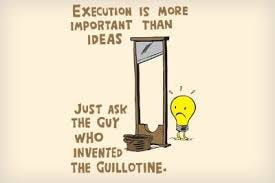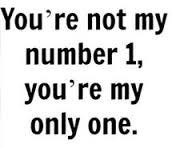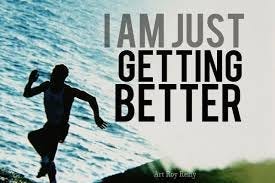How do you come up with the best startup idea for you? Where do you look for ideas? How do you know if a startup idea is right for you? Do you have what it takes to pull off your startup idea? Where do we start — do we rely on our passion, or look for emerging technologies, or just have an inventory of our skill sets? How many times have you been a part of a brainstorming session to think of a business idea? And yet, what has been the result of all those efforts? Getting a good startup idea is not easy. Why is it tough? Dan Andrews discusses 2 Reasons You Can’t Come Up With a Business Idea . He says, “For people who aren’t naturally born entrepreneurs, the toughest part about making the transition to the entrepreneurial lifestyle is coming up with a profitable business idea.” He lists two reasons for this, and the first is that you confuse a ‘plan’, a.k.a. “how”, with a ‘product’, a.k.a. “ what”. The second reason is that you wait, read, network, and learn until you get a good idea. Business ideas don’t come from the back of napkins in coffee shops or from careful analysis of your strengths, weaknesses, interests, and market opportunities. But they come from experience and expertise that comes from throwing yourself at hard problems that you note. Some sources, as always, told us In the article 17 Ways to Find Startup Ideas by Rob Marsh, it says that coming up with an idea for a new business shouldn’t be hard. The article gives a list of ways to find the right idea for you. The list of sources includes things like searching Google for “Business Ideas”, turning your skills into your business, finding a co-founder with an Idea, checking a local university’s tech transfer program, and more. How to Find Great Startup Ideas, a Slideshare presentation by Startup Xpress, has an interesting presentation on how you can get great startup ideas, and gives some examples of how some of the big ideas happened using 7 important techniques. Some advice, we always heard Startup Ideation: What you need to know to get an edge, a book by Judith Zen, states that startup ideas are misunderstood and overrated, and that there is the common misconception that “if only I had a killer startup idea, I could make a fortune… Execution matters a whole lot more than the startup idea itself. It takes a lot to pull off a startup idea, and not everyone has it in them to pull off a Facebook, a Dropbox, or a Snapchat, even if the idea fell into their laps.” Guy Kawasaki, while discussing “The Art of Innovation” at TEDxBerkeley, advises startup founders about the matter of perspective when it comes to a startup idea.
A classic example he elaborates is that of the ice business. In this example, he points out how ice ice-making business transformed over the past century from being ice harvesters to ice factories and then to refrigerators. The very interesting story about all of these curves is that none of the organizations that were ice harvesters became ice factories, and ice factories did not become refrigerator companies, because most companies define themselves in terms of what they do, not the benefits they provide. If you define yourself as we cut blocks of ice out of lakes, you remain an ice harvester. If you define yourself as we freeze water centrally, you remain an ice factory. If you define yourself as we make a mechanical gadget called a refrigerator, then you stay on the refrigerator curve. Great innovation occurs when you get to the next curve. Nat Turner, co-founder of Flatiron Health, has a different approach. He’s built a unique methodology to systematically find the next great thing without being what he calls “a visionary founder.” It’s already worked once before — with his first company, Invite Media, which sold for a reported $80 million to Google in 2010.
An article 90% of Feedback is Crap: How to Find the Next Big Startup Idea elaborates on his process: instead of just researching the idea, or talking casually with others in the relevant field, immediately began to pitch — which is a core tenant of Turner’s approach to finding great ideas. Turner’s method of investing massive amounts of time into learning about a space by pitching to knowledgeable advisors, creating lightweight but polished demos, and continually improving the process is a way of gathering useful domain expertise without accumulating the biases of working in an industry for decades. You can instead draw upon collectives of hundreds of years of cumulative experience by going out and pitching, and pitching, and pitching to get the best quality knowledge available. The only way that works There is, though, an almost sure-shot way of getting good startup ideas that will work.
This is what Paul Graham, Co-Founder of Y Combinator, says in How to Get Startup Ideas. The very best startup ideas tend to have three things in common: they’re something the founders themselves want, that they can build, and that few others realize are worth doing. Beginning by trying to think of startup ideas is doubly dangerous: it doesn’t merely yield few good ideas; it yields bad ideas that sound plausible enough to fool you into working on them. He has some advice on two other fronts: Live in the future, then build what’s missing, and turn off the filters that usually prevent you from seeing things around. According to him, finding startup ideas is a subtle business, and that’s why you should think of starting off only if you have the time and the inclination to build things and not just because they’re interesting.
He adds, customers don’t buy products in a vacuum; they switch from something else. Customers don’t care about your solution; they care about removing obstacles in the way of achieving their goals. These obstacles or problems create space for innovation. In How to come up with startup ideas that are worth your time, Michael Deng “Turn off autopilot and be aware of what’s going on around you. Inefficiencies in the world and problems you and your friends face daily are potential opportunities. Most people hit these obstacles, groan internally, and move on. They don’t think about why these obstacles exist and whether they can be solved.” However, he warns, becoming aware is much easier said than done because it requires a fundamental change in being. Steven Johnson is a leading light of today’s interdisciplinary and collaborative approach to innovation. Johnson has to his credit many published books, including his bestselling “Where Good Ideas Come From: The Natural History of Innovation”. In his TED Talk, Where good ideas come from, he narrates how innovations happen that make a difference to the world. We take ideas from other people, from people we’ve learned from, from people we run into in the coffee shop, and we stitch them together into new forms, and we create something new. That’s really where innovation happens. And that means that we have to change some of our models of what innovation and deep thinking really look like. In a chaotic environment, ideas are likely to come together, where people are likely to have new, interesting, unpredictable collisions — people from different backgrounds. Science about getting innovative ideas There are some effective hacks that you can work on to increase your ability to come up with good ideas, if you have some understanding of how our brain works. In To Come Up with a Good Idea, Start by Imagining the Worst Idea Possible, Ayse Birsel, Ayse Birsel is the co-founder of Birsel + Seck, an innovative design studio, says there are many creative tools a designer uses to think differently, but none is more counter-intuitive than “wrong thinking,” also called reverse thinking. Wrong thinking is when you intentionally think of the worst idea possible — the exact opposite of the accepted or logical solution, and work back from those to find new ways of solving old problems. One of the principles that drives this approach to innovation and discovery is that it makes you a beginner.
Being a beginner shifts our perspective and opens up our minds to possibilities. In an article, The Value of Play As a Driver of Innovation, by Farnam Street, and run by Shane Parrish, tells a story of play, and how it fits into the human experience, how it can teach us how to embrace the possibilities that can come of being frivolous. Because play is often about breaking rules and experimenting with new conventions, it turns out to be the seedbed for many innovations that ultimately develop into much sturdier and more significant forms. The pursuit of play gave us the ability to organize ourselves differently, to make connections with people we would not normally have interacted with. Why is play so powerful? When the world surprises us with something, our brains are wired to pay attention.
Play can transport us out of the realm of “things we already know” (the route to work, the importance of saving money, and of brushing our teeth) and into the realm of “things we haven’t yet figured out.” And it is here that innovation happens. In his energetic and insightful TEDx talk, What is a Thought? How the Brain Creates New Ideas , neuro-scientist Dr. Henning Beck gives insights into thought processes and tells you how you can create new ideas. Explaining the difference between having information and having an idea or knowledge, he says,
He further elaborates, “Computers learn, but we humans understand. When we learn, we can unlearn it too. When we understand something, we cannot de-understand it again. Because re-understanding means you change the way you process information, and since processing and output are the same (unlike for computers) for humans, we understand fast, on the spot. Understanding shows you use the information to change your knowledge.” Dr. Beck’s most important practical advice is that you shouldn’t do it like a computer — harder, faster, more efficient; if you want to make use of this ability to stay creative. He has 3 specific tips that have been proven to have the potential to hack your creativity. Firstly, take a break, lose focus — if you step back, you can possibly see different things. Number two, dig into the problem deep, focus on tasks, and then step back, do something unrelated, engage with some automated routine boring thing, or just chillax, and this is when good ideas come to you. Thirdly, escape the echo chambers — if you provoke yourself, challenge your opinions, break your thinking rules, some new ideas might spark. What’s your story? How and where did you get your startup idea? Invite your friends and earn rewardsIf you enjoy Startup-Side , share it with your friends and earn rewards when they subscribe. |
Monday, June 16, 2025
Where Startup Ideas Actually Come From
Subscribe to:
Post Comments (Atom)
The 0 → 1 Phase Nobody Talks About: Before Ideas Have Words
Why the hardest part of 0 → 1 innovation is naming the problem. A deep dive using Canva and Duolingo to explain the pre-language phase of ne...
-
kyungho0128 posted: "China's crackdown on Bitcoin (BTC) mining due to energy consumption concerns is widely regarded as...
-
Crypto Breaking News posted: "Mikhail Fedorov, Ukraine's Deputy Prime Minister and the head of the country's Minist...
-
admin posted: " A major British bank, Natwest, has put a limit on fund transfers to crypto...








No comments:
Post a Comment